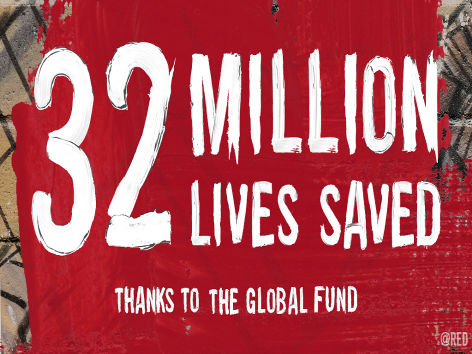Latest Global Fund Results Show Increase in HIV Treatment
This is a guest blog post by The Global Fund.
Ahead of next week’s International AIDS Conference in Durban, South Africa, the Global Fund to Fight AIDS, Tuberculosis and Malaria today released results that show a significant increase in the number of people being treated for HIV.
The results indicate that the Global Fund partnership had provided lifesaving HIV treatment to 9.2 million people by the end of 2015 – an additional 100,000 people each month since mid-2015. More than 54 percent of all the people on treatment for the disease around the world are through Global Fund-supported programs.
“In Abidjan in April, the Global Fund Board approved a Strategy that will deliver impact even further by focusing on women and girls, key populations, resilient and sustainable systems for health, and mobilizing resources for prevention, treatment and care,” said Norbert Hauser, Chair of the Board. “But we need continued political commitment and advocacy to reach our collective goals.” Mark Dybul, Executive Director of the Global Fund, added: “We are tremendously inspired by the many partners who have come together and saved the lives of millions of people. However, we cannot let up. New HIV infections among adults are too high. We must invest more in prevention, including in programs to reduce human rights and gender-related barriers.”
There has been a dramatic increase in people on HIV treatment since 2000, when leaders, activists and scientists first gathered in Durban, South Africa, to demand that world leaders do more to treat people with HIV. At the time, only 770,000 of 29 million people living with HIV had access to treatment. The cost of HIV treatment was about US$10,000 per year, per person and was out of reach for most people around the world.
Today, the treatment costs less than $100 per person, per year, and a total of 17 million people are accessing antiretroviral treatment across the world with support from governments, civil society, the private sector and communities affected by the diseases.
The new results show a rise in all other HIV-related interventions supported by Global Fund partnership in the last six months of 2015:
- – The number of pregnant women receiving antiretroviral medicines to prevent the transmission of HIV to their unborn children grew from 3.3 million to 3.6 million
- – The number of HIV counselling and testing sessions increased from 472 million to 509 million.
- – The number of condoms distributed increased from 5.2 billion to 5.3 billion.
- – The results also show significant progress in the fight against tuberculosis, a disease inextricably linked to HIV infection, and malaria.
- – The number of new smear-positive TB cases detected and treated increased from 14.4 million to 15.1 million, and the number of people treated for multidrug-resistant TB (MDR-TB) increased 15 percent from 230,000 to 270,000.
- – Over the same period, 59 million new insecticide-treated nets were distributed, taking the total number of nets distributed through Global Fund-supported programs to date to 659 million. The number of malaria cases treated also increased by 22 million from 560 million to 582 million.


